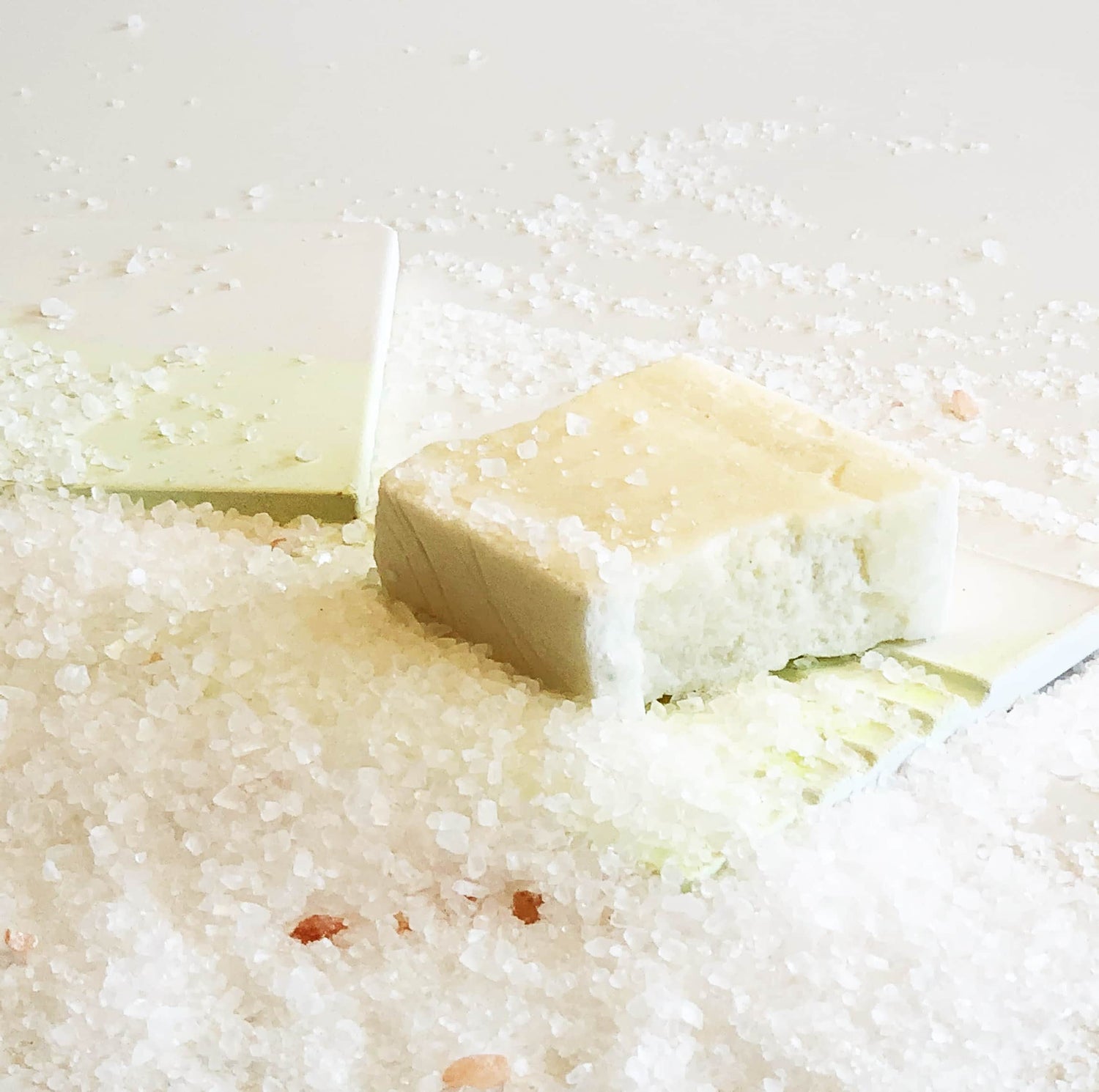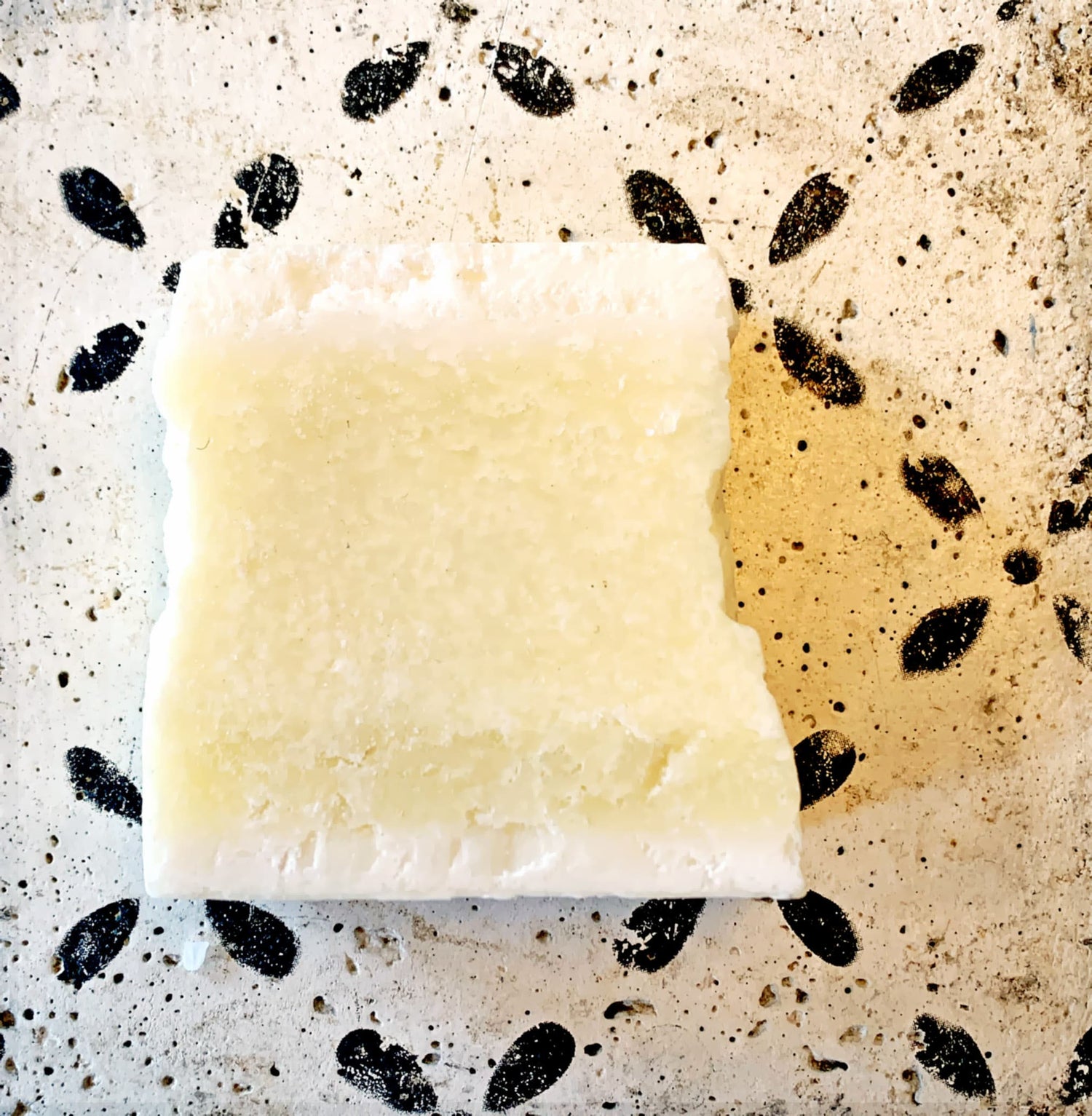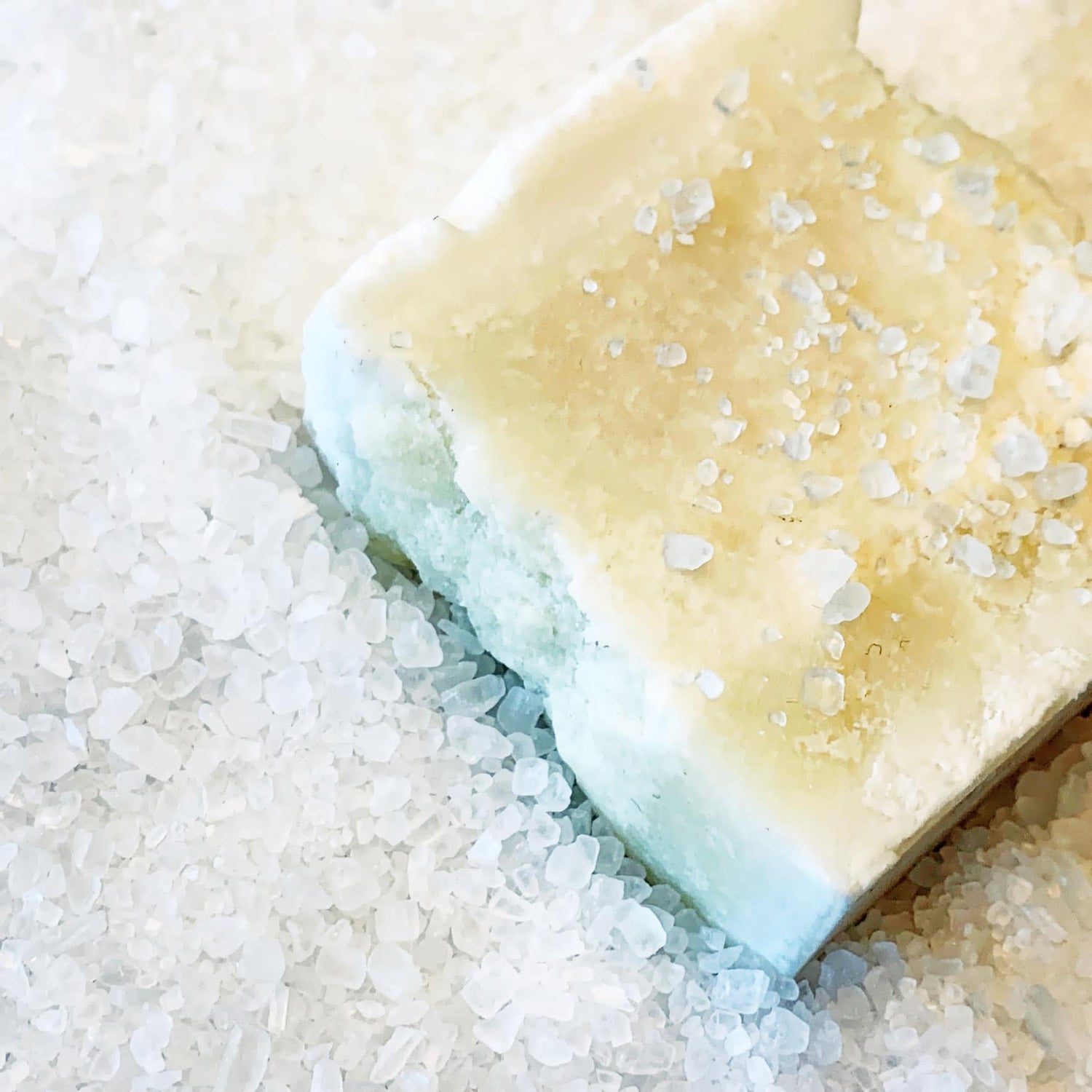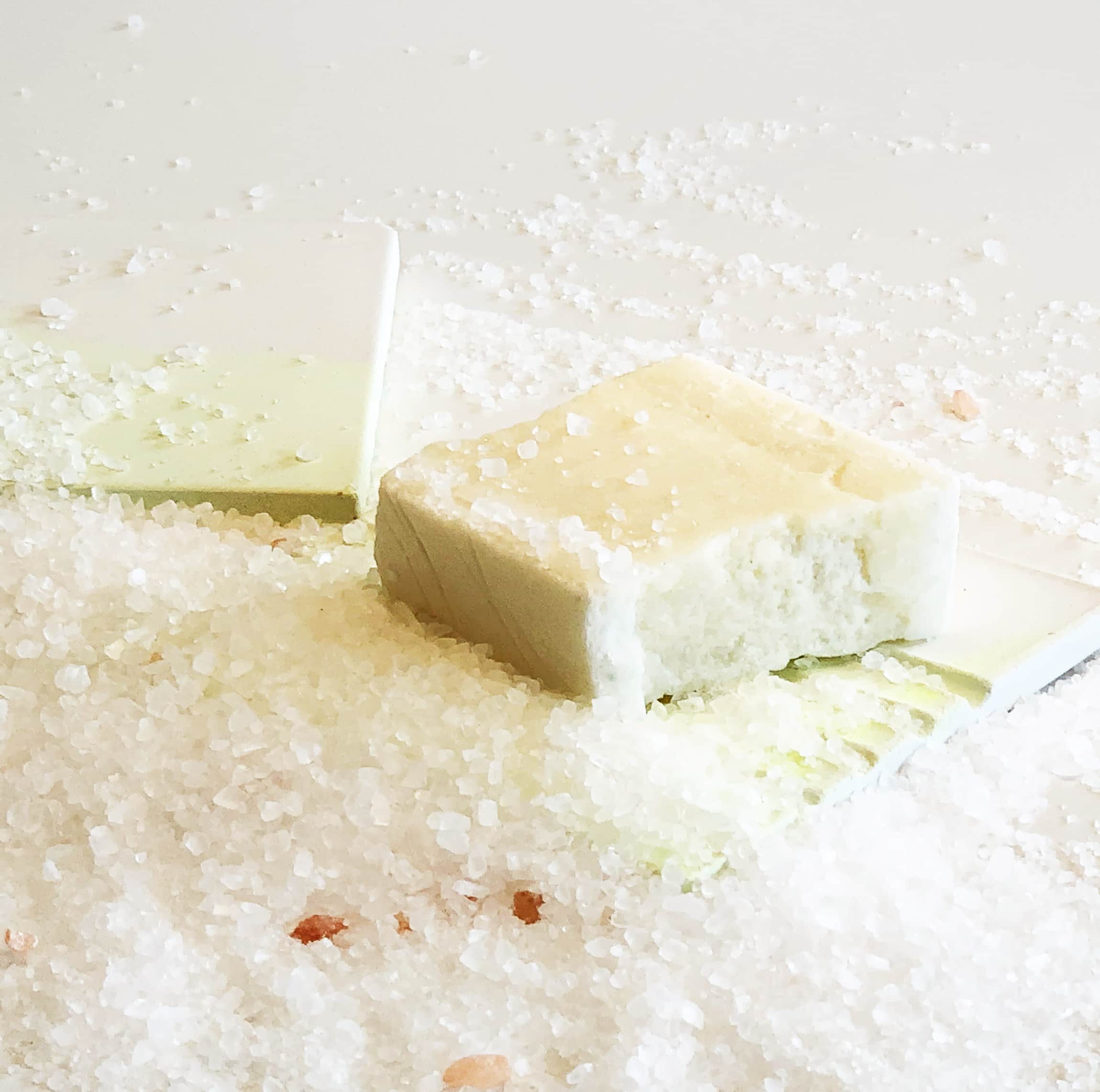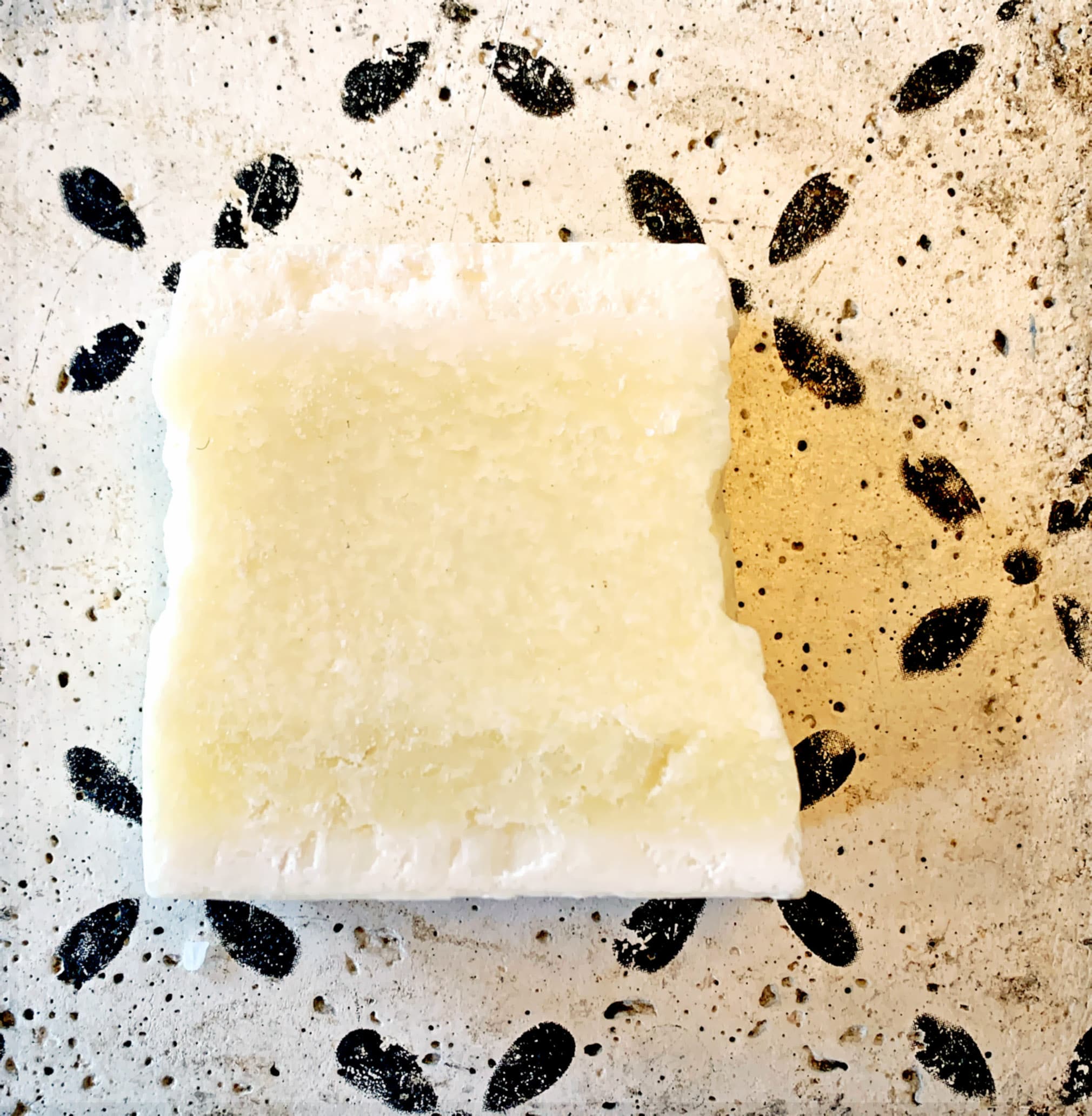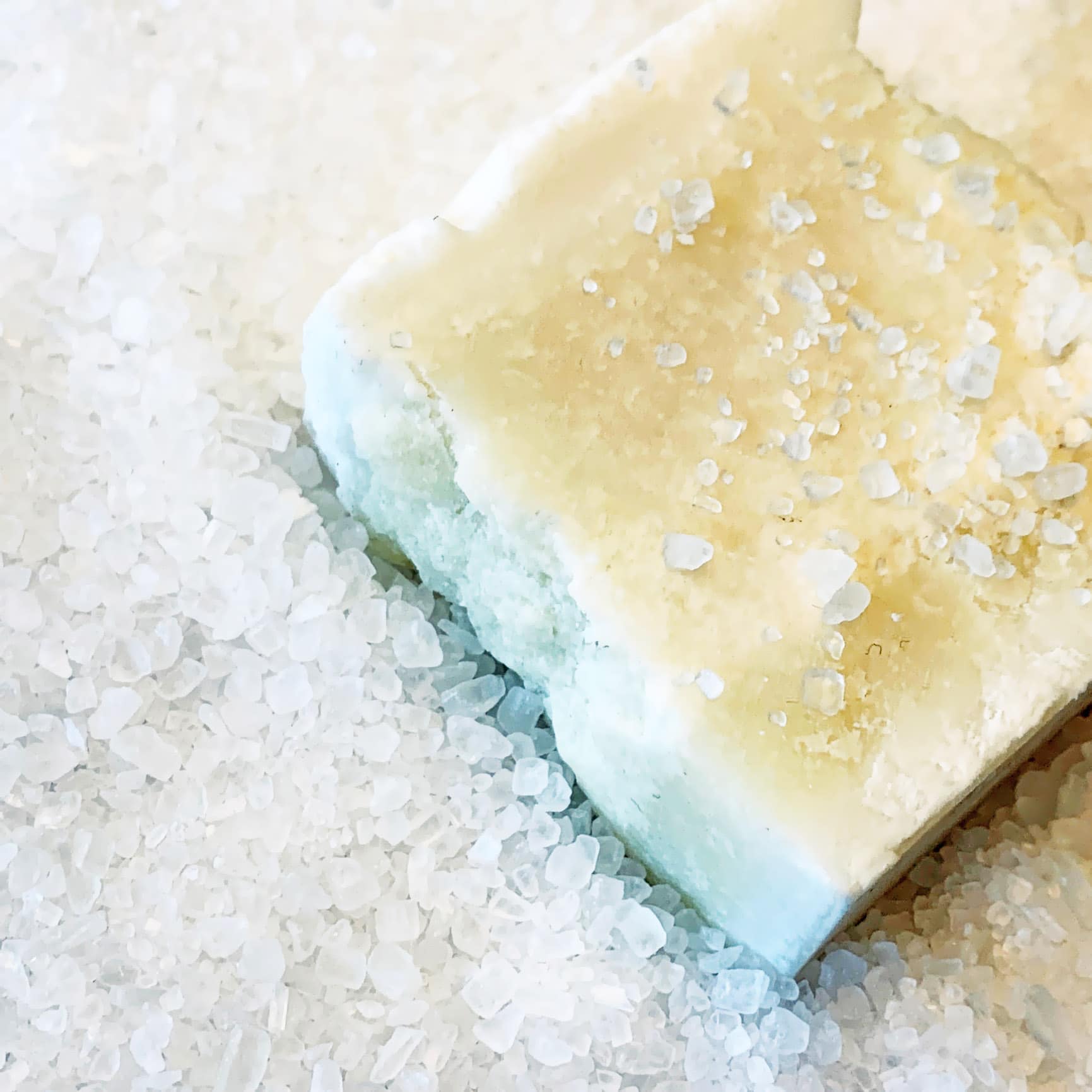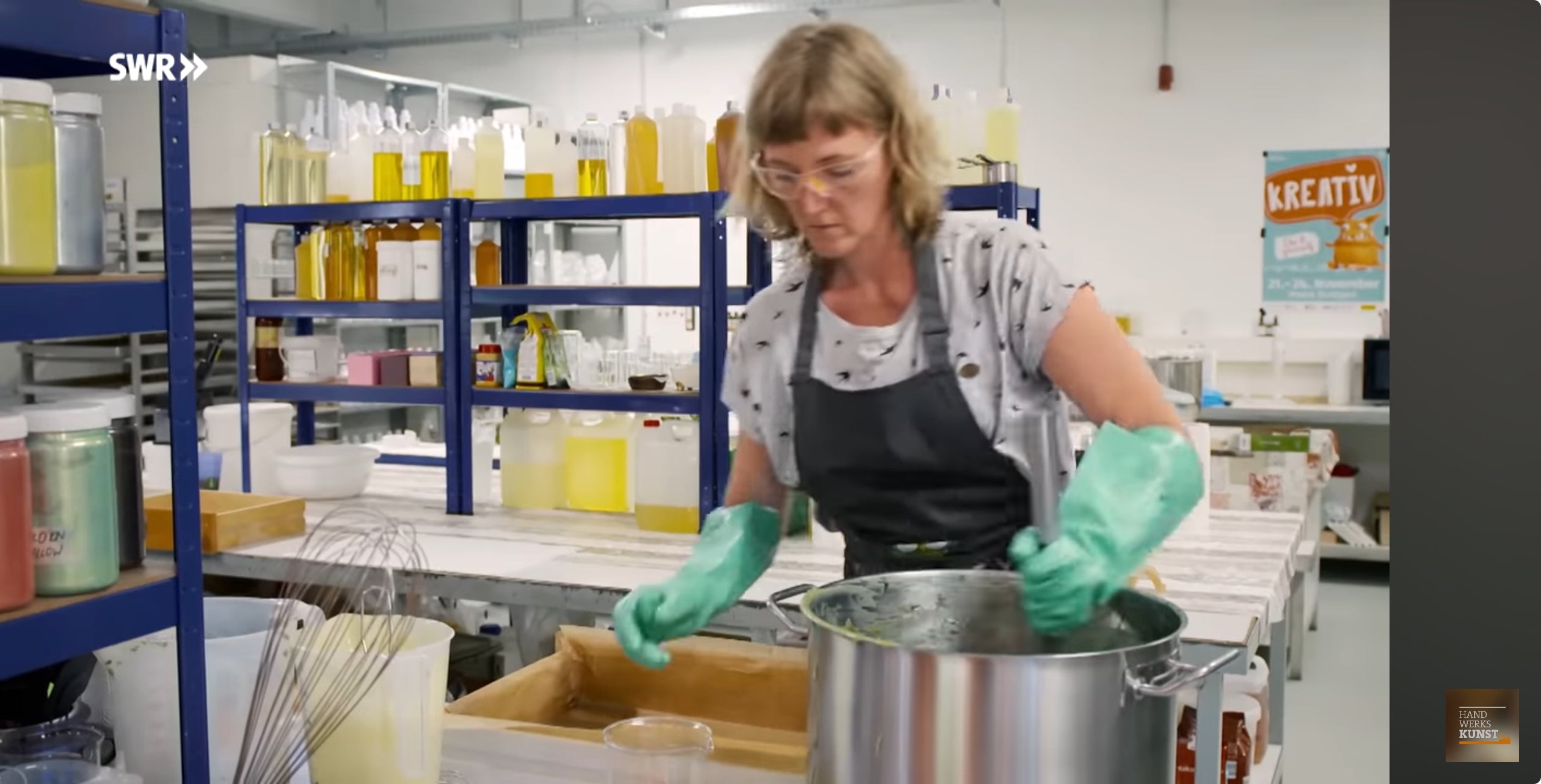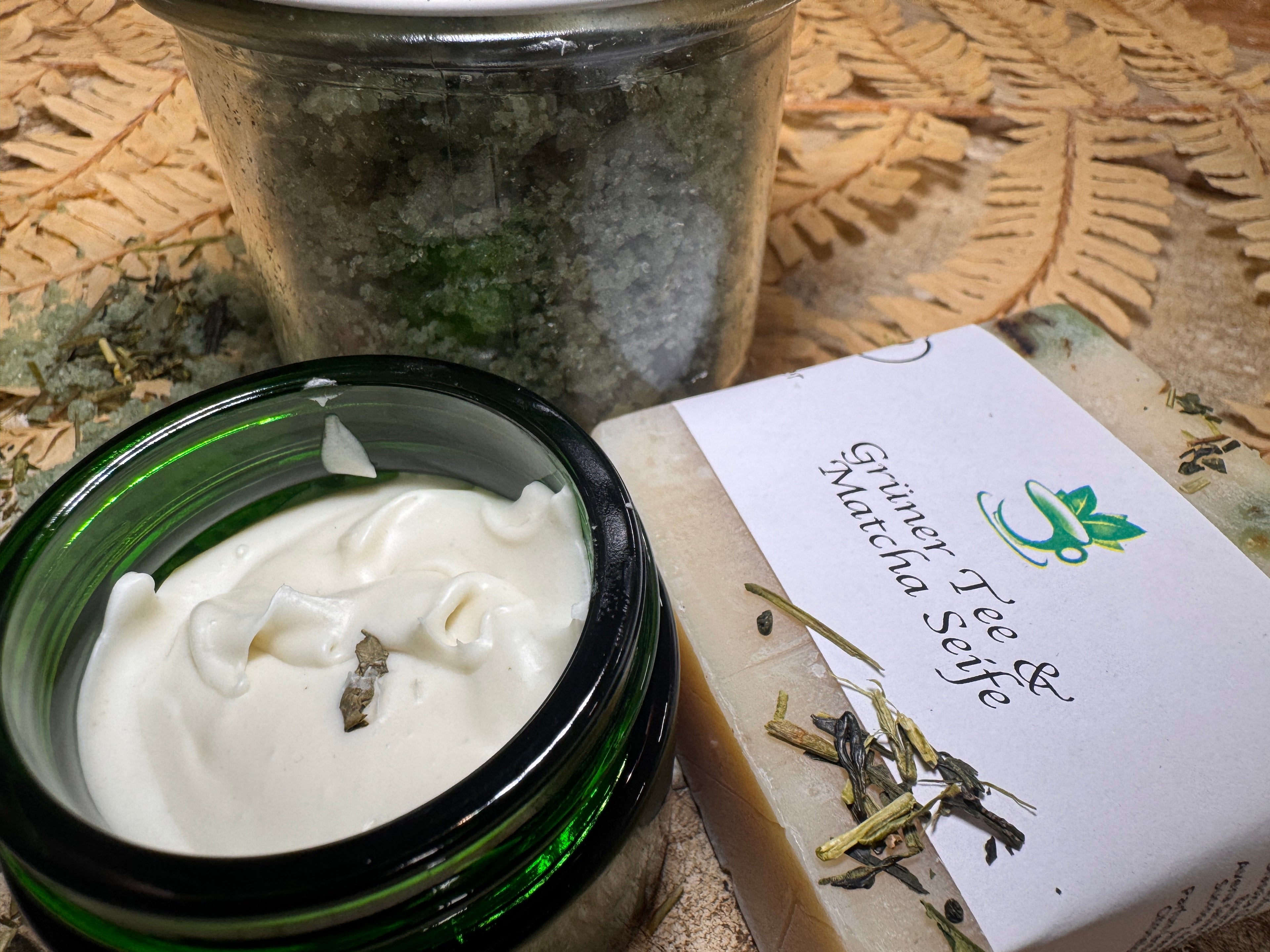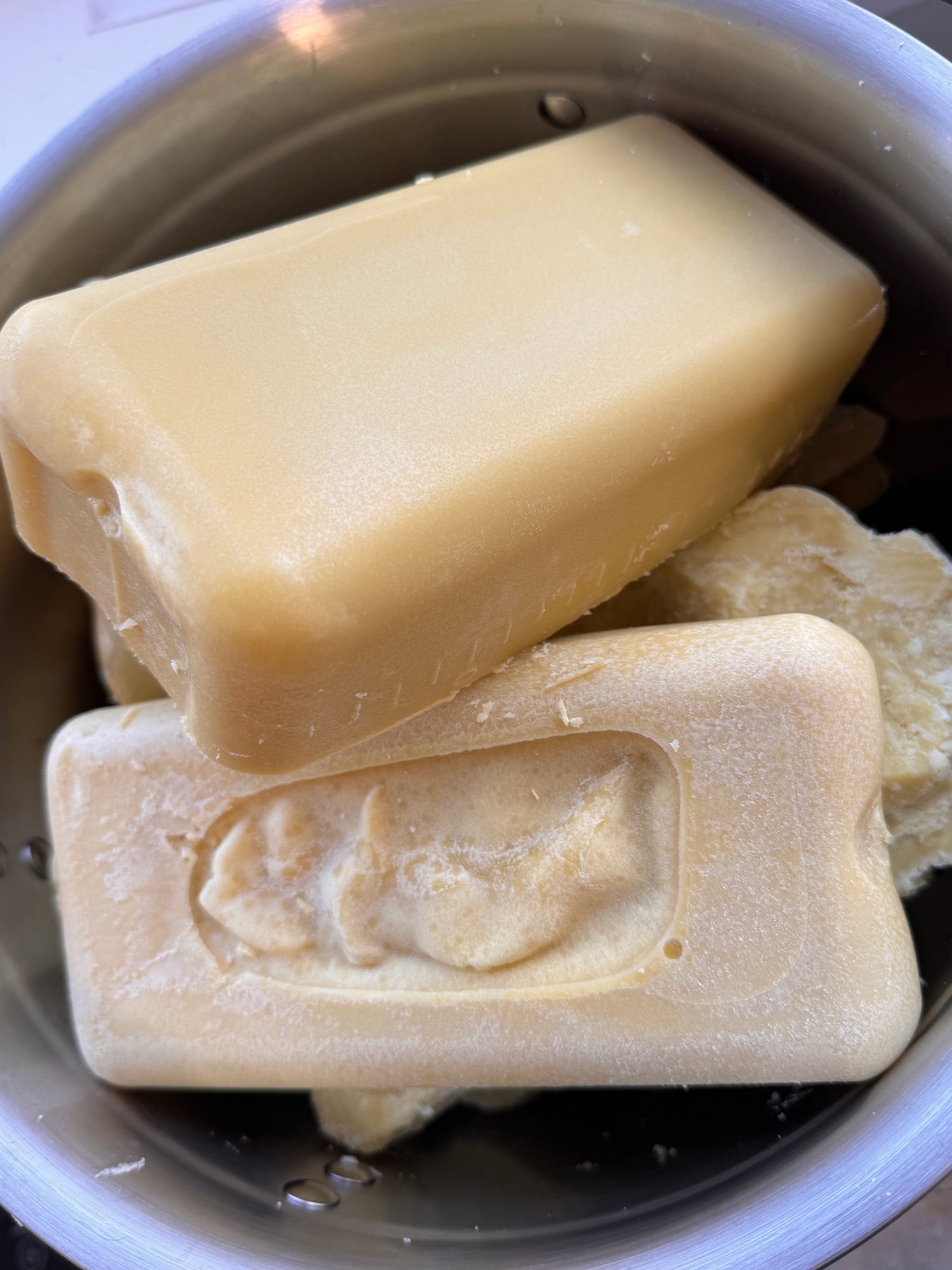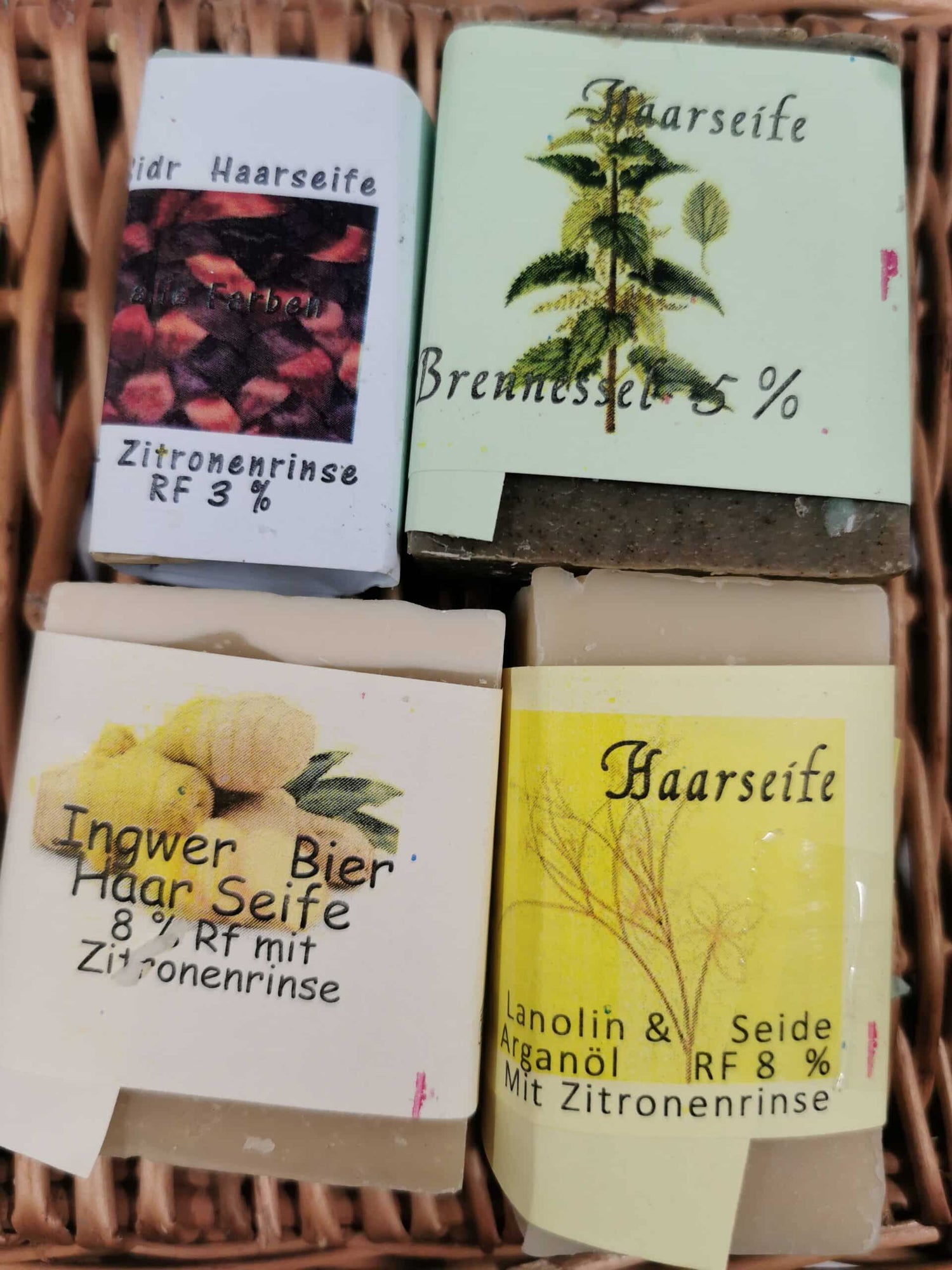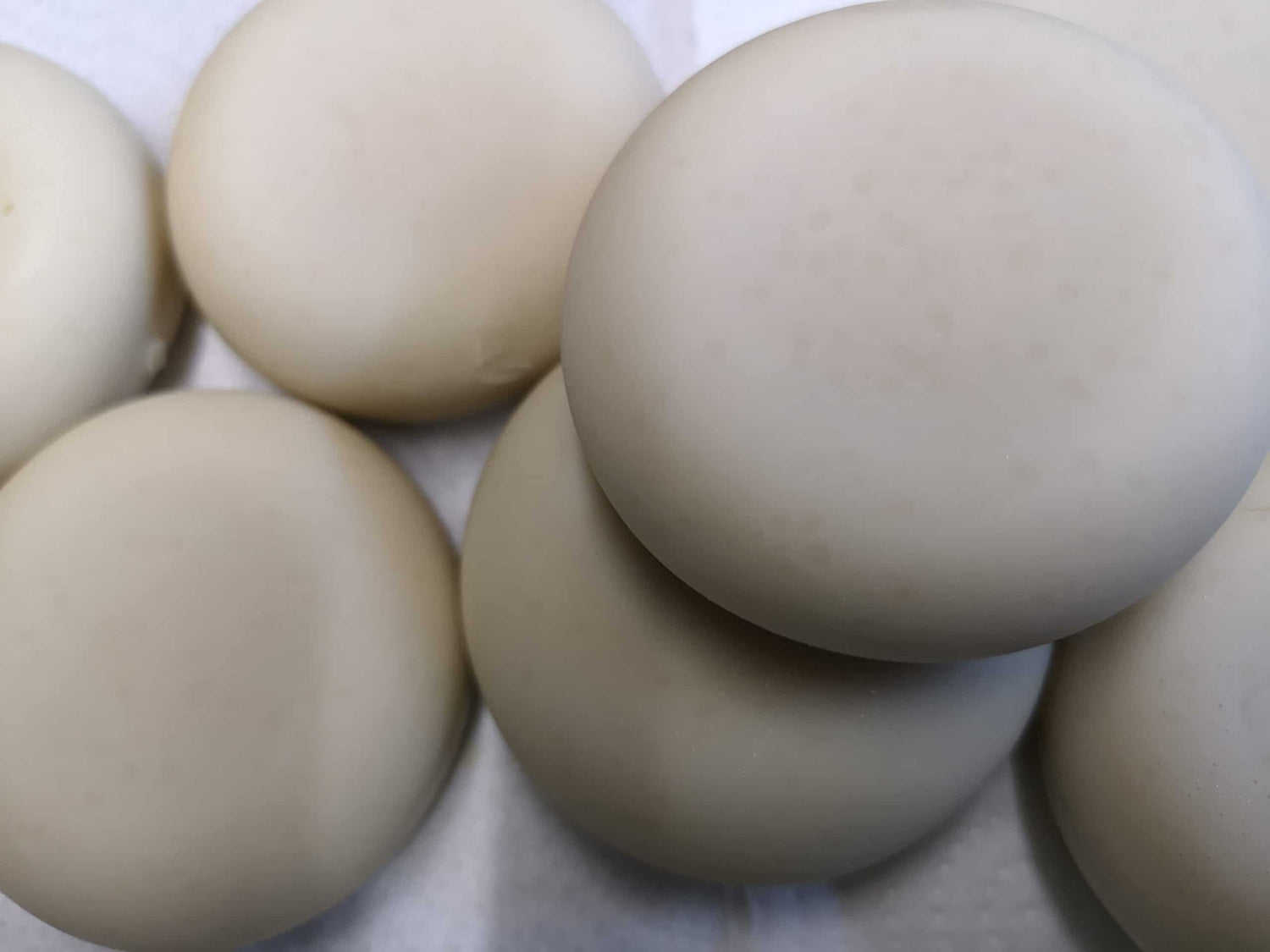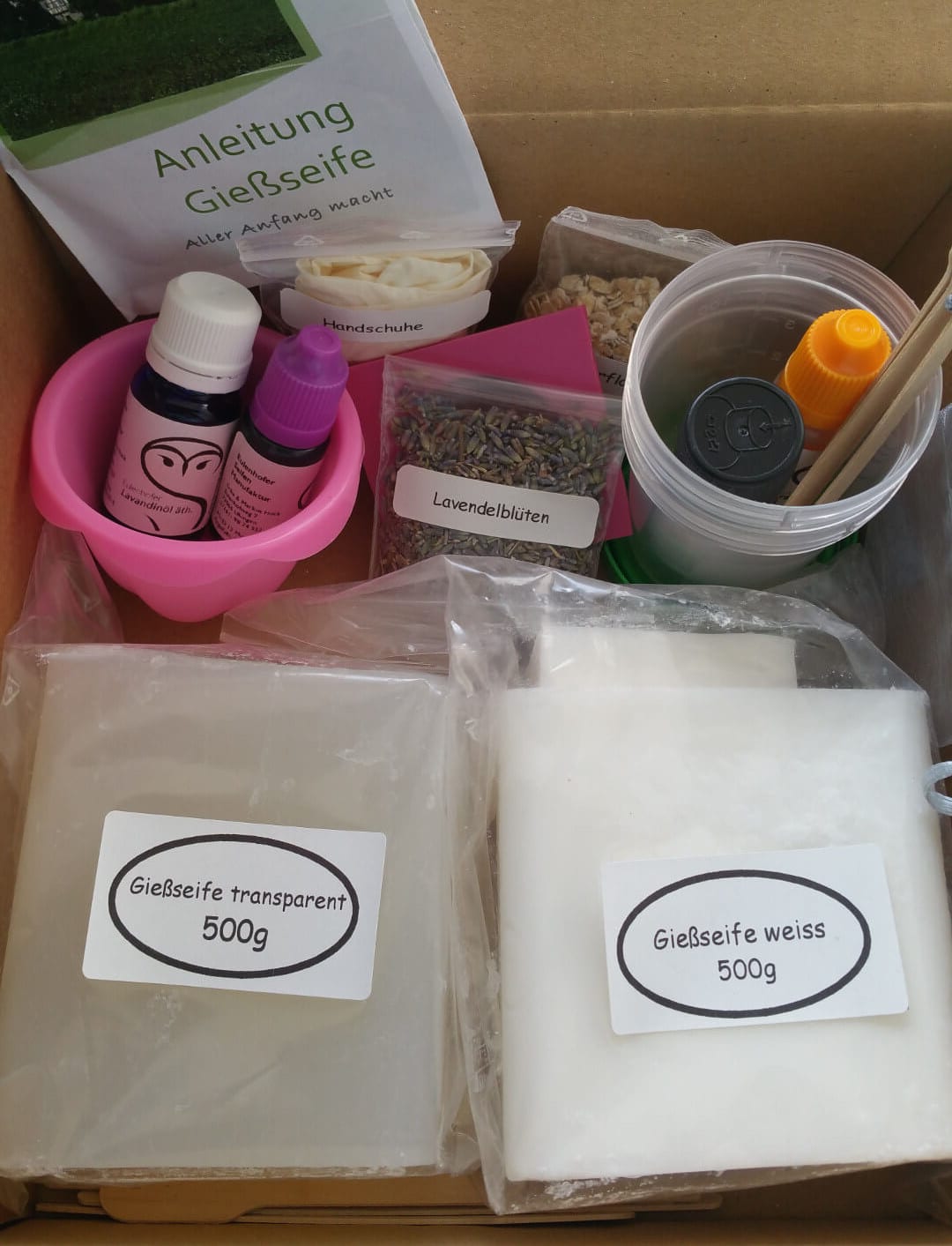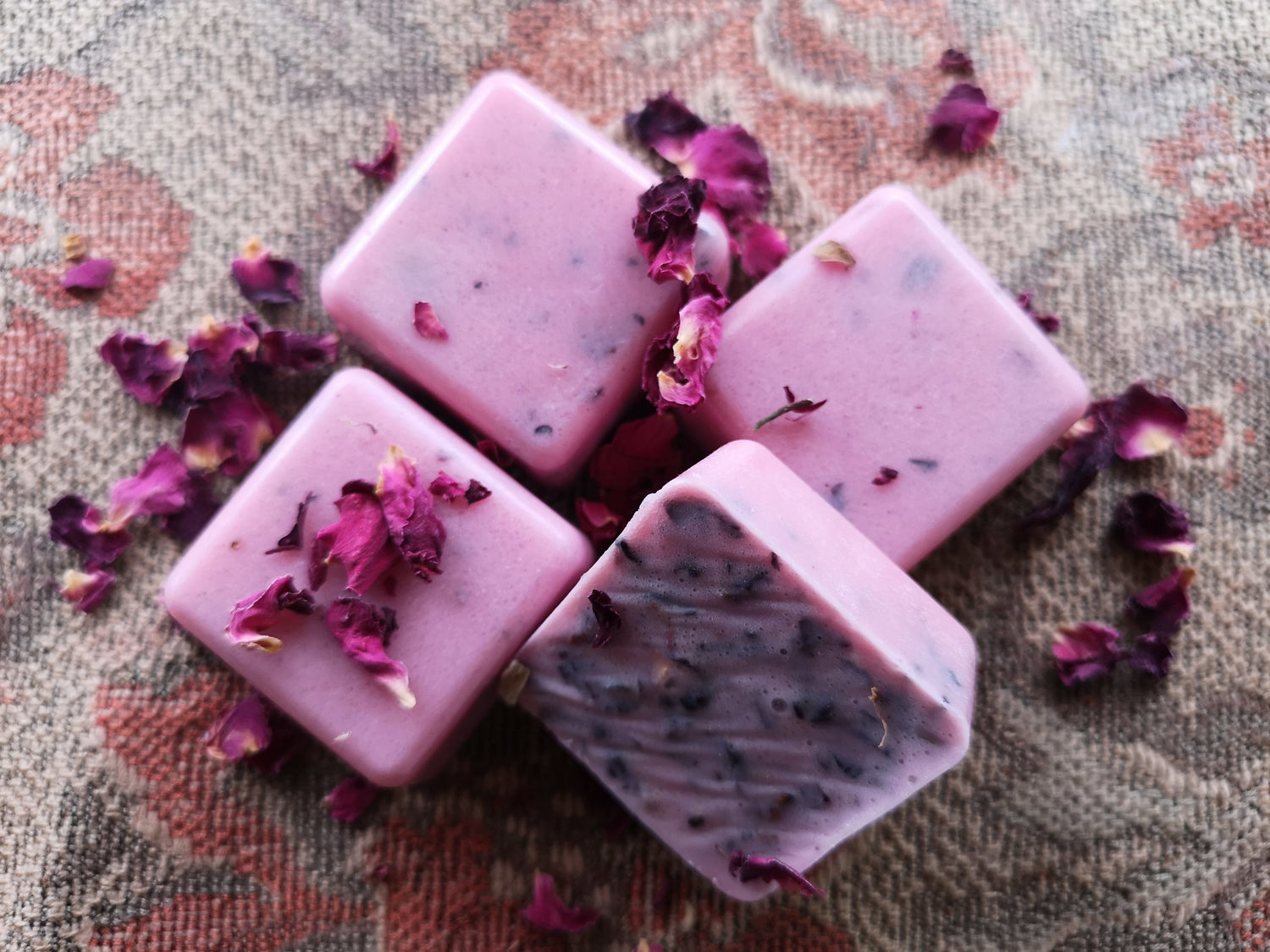Why salt? You may know that after a vacation at the sea, your skin feels better. This is because, similar to salt soap, sea water has a high salt content compared to normal water.
The reason for this is that salt has antibacterial and anti-inflammatory properties. The salt in the salt soap can also tighten and detoxify the skin and at the same time supply the skin with important trace elements.
Salt peeling : When using a salt peeling, you should be particularly careful to massage the peeling gently onto damp skin. The salt contained in the peeling is usually coarser than in soap. To avoid skin irritation, you should therefore make light circular movements. In addition, with the salt peeling, it is also important to pay attention to which part of the skin the peeling is suitable for. There are often salt peelings developed for the face, which are gentler than body peelings because facial skin is particularly gentle.
In addition to peeling, there are also salt baths. You simply add these to your bath water like other bath additives. The salty water transports toxins out of the skin and nourishes the skin with minerals. The skin's appearance improves in a similar way to a bath at the sea.
which skin types:
The range of applications for salt soaps is wide. Salt soap controls the skin's sebum production and balances the skin's natural protective film. There are no restrictions on the suitability of salt soap for different skin types.
Furthermore, it not only reduces sebum production, but can also release the natural oils on dry skin, which means the skin is naturally cared for even after application.
Contrary to what the name suggests, Himalayan salt does not come from the Himalayas, but is mostly mined in the Khewra salt mines in Pakistan. What is special about the salt is its slightly pink color. Compared to normal table salt, Himalayan salt contains a particularly high number of minerals.
100g


